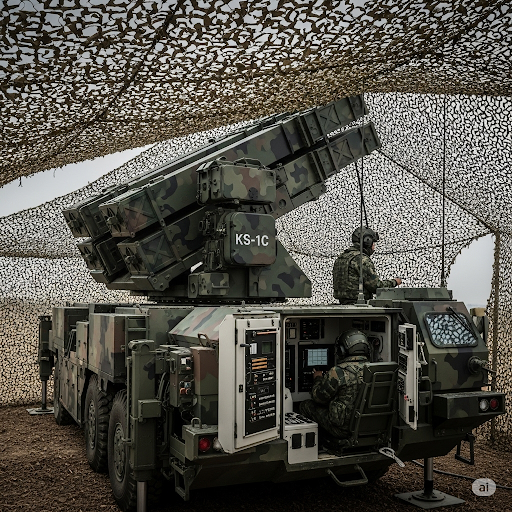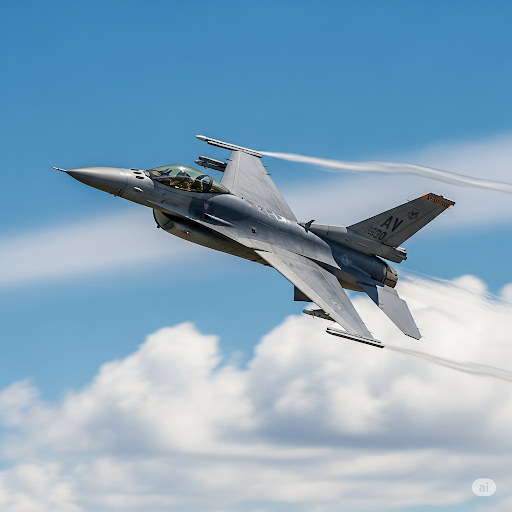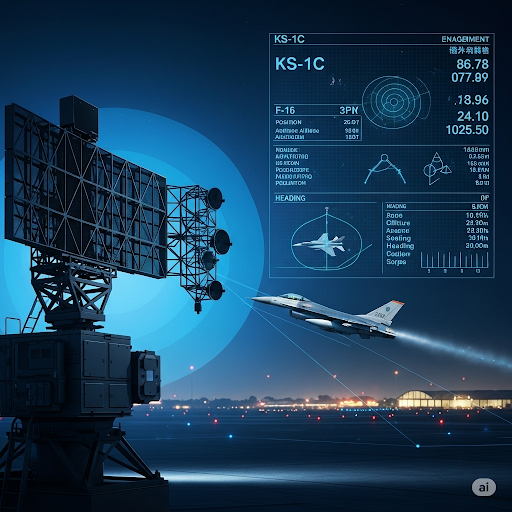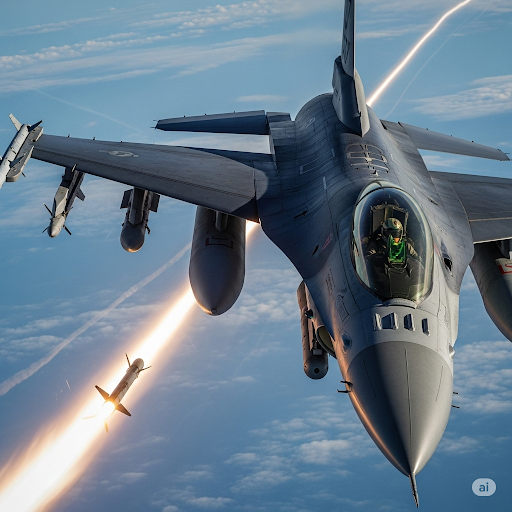Explore the thrilling hypothetical showdown between the KS-1C and F-16 in “The Unseen Dance.” Discover tactics, capabilities, and aerial strategies.
Introduction
The world of modern military technology is a fascinating, often opaque, realm where cutting-edge engineering dictates the balance of power. Among the myriad of systems designed for air superiority and defense, two stand out as emblematic of their respective nations’ approaches: the Chinese KS-1C surface-to-air missile (SAM) system and the venerable American F-16 Fighting Falcon multi-role fighter jet. While they represent entirely different aspects of aerial warfare – one a ground-based defender, the other an airborne attacker – a hypothetical engagement between them offers a compelling thought experiment into the intricate dance of modern combat.
The Ground Sentinel: KS-1C Air Defense System

The KS-1C, also known by its military designation HQ-12, is a medium-range surface-to-air missile system developed by China. It represents a significant step in Chinese air defense capabilities, particularly its incorporation of a phased array radar system, a technology crucial for tracking multiple targets simultaneously and guiding missiles with precision.
Evolution and Capabilities of the KS-1C
The lineage of the KS-1C traces back to the early 1980s with the initial KS-1 prototype. Over the decades, it has undergone several upgrades, with the KS-1C variant specifically featuring canister-launched missiles, offering quicker reload times and enhanced protection for the missiles themselves.
A typical KS-1C battery is a formidable setup. It usually comprises a passive phased-array radar (PPAR) for target detection and tracking, multiple launchers (often carrying two missiles each), re-load vehicles, and a command-and-control station. The H-200 radar, a common fit for the KS-1C, boasts a detection and engagement range of up to 70 kilometers and can track numerous targets while simultaneously guiding several missiles.
The KS-1C missile itself is a solid-fuel propelled weapon, weighing around 900 kg, and capable of reaching speeds of up to Mach 3.5 (1200 m/s). It carries a 100 kg high-explosive fragmentation warhead, designed to detonate with impact or proximity fuses, maximizing its destructive radius against aerial threats. Its operational envelope allows it to engage targets from as low as 50 meters to altitudes of 25 kilometers, making it effective against a range of airborne platforms, from helicopters and UAVs to fixed-wing aircraft and even certain cruise or ballistic missiles.
The strength of the KS-1C lies in its ability to establish a layered defense, particularly for regional air defense. Its mobility, being road-mobile, allows for strategic deployment to protect key assets or frontline positions. Its phased array radar provides excellent situational awareness and resistance to electronic countermeasures to a certain extent.
The Sky Dominator: F-16 Fighting Falcon

In stark contrast, the F-16 Fighting Falcon is a globally recognized symbol of air power. Developed by General Dynamics (now Lockheed Martin), it’s a compact, highly maneuverable, supersonic multi-role fighter that has served with numerous air forces worldwide for decades.
Anatomy of an Aerial Predator: The F-16
The F-16 was initially conceived as a lightweight air-to-air combat fighter, emphasizing maneuverability and speed. Its design incorporates advanced aerodynamics, including a blended wing-body and leading-edge strakes, which allow for exceptional agility and high-G turns. The bubble canopy provides the pilot with an unparalleled 360-degree view, critical for close-quarters combat.
Powered by a single turbofan engine, the F-16 can achieve speeds exceeding Mach 2. Its armament is incredibly versatile, ranging from an internal 20mm M61 Vulcan cannon to a wide array of air-to-air missiles (like the AIM-120 AMRAAM for beyond-visual-range engagements and AIM-9 Sidewinder for close combat) and air-to-ground munitions (precision-guided bombs, rockets, etc.). Modern F-16 variants are equipped with sophisticated avionics, including advanced radars capable of detecting low-flying aircraft amidst ground clutter, electronic warfare suites for self-protection, and targeting pods for precision strike missions.
The F-16’s combat history is extensive, having participated in numerous conflicts, demonstrating its effectiveness in air-to-air combat, suppression of enemy air defenses (SEAD), offensive counter-air, and close air support roles. Its adaptability and constant upgrades have kept it relevant in a rapidly evolving threat landscape.
The Hypothetical Engagement: A Clash of Doctrines

Imagine a scenario where an F-16, perhaps on a reconnaissance mission or a SEAD sortie, encounters a KS-1C battery. This isn’t a simple dogfight; it’s a dynamic interplay between a highly capable aircraft and a sophisticated ground-based air defense system.
The F-16’s Approach
The F-16 pilot’s primary objective would be survival and mission completion. Modern F-16s are equipped with radar warning receivers (RWR) that detect enemy radar emissions. Upon detecting the KS-1C’s H-200 radar, the pilot would immediately initiate evasive maneuvers. This could involve high-G turns, rapid changes in altitude, and deploying chaff (aluminum strips designed to confuse radar) and flares (infrared decoys for heat-seeking missiles).
The F-16 would likely attempt to exploit terrain masking to hide from the KS-1C’s radar or approach from an unexpected vector. If equipped for a SEAD mission, it might launch anti-radiation missiles (ARMs) like the HARM, designed to home in on the radar emissions of the KS-1C, aiming to neutralize the threat before it can fire.
The KS-1C’s Response
From the ground, the KS-1C crew would be actively scanning for aerial threats. The H-200 radar, with its advanced phased array technology, would be working to establish a track on the incoming F-16. Once a reliable track is established, the system would calculate an engagement solution, considering the F-16’s speed, altitude, and maneuvers.
The KS-1C’s ability to track multiple targets and guide several missiles simultaneously would be a key advantage. If the F-16 is within its engagement envelope (up to 70 km range and 25 km altitude), the KS-1C would launch its missiles. The missile’s high speed and maneuverability (capable of sustaining 20g turns) are designed to counter evasive aerial targets.
The Dynamic Outcome: No Simple Victory

The outcome of such an encounter is complex and highly dependent on numerous factors:
- Situational Awareness: Who detects whom first? The F-16’s RWR provides early warning, but the KS-1C’s radar might have a longer detection range.
- Pilot Skill and Training: An experienced F-16 pilot can utilize advanced evasive maneuvers and tactical knowledge to increase survivability.
- Electronic Warfare (EW) Capabilities: The F-16’s onboard jamming pods and the effectiveness of its chaff and flares against the KS-1C’s radar and missile guidance system would be crucial. Conversely, the KS-1C’s radar would have its own electronic counter-countermeasures (ECCM) to resist jamming.
- Number of Systems Involved: A single F-16 against a full KS-1C battery is a different scenario than multiple F-16s coordinating an attack, or the KS-1C being part of a larger integrated air defense network.
- Engagement Doctrine: Both sides would follow their respective military doctrines for such engagements, influencing their tactical choices.
- Surprise and Terrain: A surprise attack or effective use of terrain can drastically alter the odds.
In an ideal scenario for the F-16, it might successfully suppress or destroy the KS-1C radar with an ARM before the SAM battery can launch. Alternatively, it might evade the incoming missiles through expert maneuvering and electronic countermeasures, disengaging to fight another day.
For the KS-1C, a successful engagement would involve detecting the F-16 early, locking on, launching a salvo of missiles, and achieving a hit. Its strength lies in its ability to project a significant threat from the ground, denying airspace to enemy aircraft.
Ultimately, this hypothetical clash highlights the intricate and constantly evolving nature of modern warfare. It’s not just about raw specifications, but the synergistic interplay of technology, tactics, training, and the human element. The KS-1C and the F-16, each formidable in its own right, represent critical components in the strategic chess game played across the skies of the 21st century.

